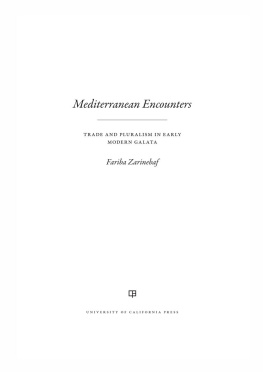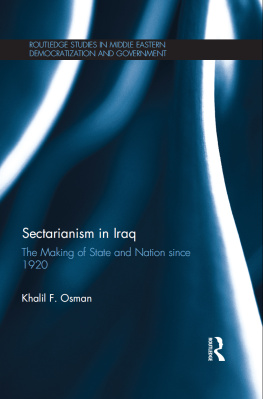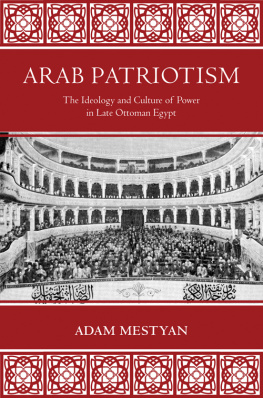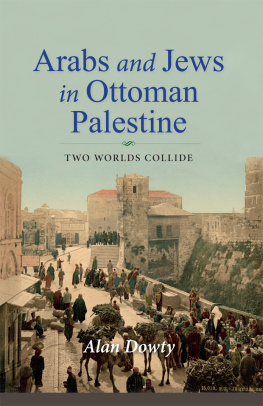Acknowledgments
I began writing this book in Berlin in 2012, when I was a Fellow at the Institute for Advanced Study in Berlin. I completed it in 2018 when I spent a semester as a Fellow at the American Academy in Berlin. I acknowledge both these institutions for providing me the opportunity to work on the manuscript. I also acknowledge the generous support I have received from my home institution in those years, Rice University. While my experiences in Berlin bookended this project, my time in Houston and Lebanon largely define it.
There are far too many people to thank for the making of this book. I list here those who read and commented on chapters or entire drafts of the book, each of whom knows the degree of my individual debt to them: Hosam Aboul-Ela, Toufoul Abou Hodeib, Seda Altug, Fareed Armaly, Orit Bashkin, Michelle Campos, Nathan Citino, Leena Dallasheh, Dima de Clerck, Esmat Elhalaby, Nathaniel George, Zeina Halabi, Jens Hanssen, Gale Kenny, Dina Khoury, Ilham-Khuri Makdisi, Bruce Masters, Christine Philliou, Amy Remensnyder, Shira Robinson, George Sabra, Grace Said, Kirsten Scheid, Aziz Shaibani, Malek Sharif, and the anonymous readers for UC Press. Their criticisms and insights have been invaluable in helping me clarify my argument. I have taxed the patience of Niels Hooper, the executive editor at UC Press who has accompanied the progress of the manuscript for years. I acknowledge, as well, the assistance of Kamal Boulatta and Lily Farhoud in securing Steve Sabellas permission to use his photograph of the evocative painting on the books cover. Boulatta alerted me to the Palestinian painter Nicola Saigs circa 1920 depiction of Caliph Umar at Jerusalem Gates, an oil on canvas at the Islamic Museum, Jerusalem. In his book Palestinian Art, Boulatta writes that the dismounted, Christ-like caliph is raising his arms in peace while looking at the Christian patriarch Sophronius. He adds that this painting represents Saigs own experience of Jerusalems interfaith harmony. To me, the painting captures the profound importance and ambiguity inherent in the ecumenical framea strikingly modern interpretation of historic coexistence that elides much in order to achieve a composite of unity.
My friends Abdel Razzaq Takriti, with whom I co-organized a conference on Arab Traditions of Antisectarianism in December 2017, Fady Joudah, and Hicham Safieddine have been key readers of and interlocutors for this work during our years together in Houston. I am also indebted to the fact that I come from an academic family. My parents, Jean Said and Samir Makdisi, have provided crucial feedback, as has my spouse, Elora Shehabuddin. My brothers Karim and Saree know well what I have tried to accomplish, having participated in the works elaboration by reading and commenting on the manuscript from its earliest drafts. It is to them I dedicate this work. I alone am responsible for any errors of fact or judgment contained herein.
Houston, April 2019
Note on Transliteration
Arabic words and names have been transliterated according to a simplified system based on that used by the International Journal of Middle East Studies. Diacritical marks have been omitted. The prefix al- is used the first time a transliterated name appears but is omitted later (e.g., al-Husri, Husri). I have not changed the transliterations of names adopted by authors who write in either English or French (e.g., Rabbath, not Rabbat). I have transliterated names to conform as closely as possible to common usage. Arabic words and proper names widely used in English, such as Quran and Beirut, are left in the familiar form.
Introduction
THE ECUMENICAL FRAME
And all the prophets are my kin, but the sky
is distant from its land,
and I am distant from what I speak ...
Mahmoud Darwish, A Canaanite Rock in the Dead Sea (1992)
Every history of sectarianism is also a history of coexistence. This book reveals how a complex, and now obscured, modern culture of coexistence first developed in the modern Middle East, which today appears to be little more than a collection of war-torn countries and societies. In particular, I question two stories that have traditionally dominated the perception of the Middle East. The first stresses a continuous history of sectarian strife between allegedly antagonistic religious and ethnic communities; the second idealizes coexistence as communal harmony.
More fundamentally, I dispute an entire way of looking at the Middle East, and the Arab world in particular, as some kind of pathological place consumed by the disease of sectarianism. Sectarianism is a real problem, but it is no more real, and no less subject to change over time, than are analogous problems of racism in the West and caste politics and communalism in South Asia. There is a key difference between orientalizing the Middle East (thinking of it as strange, aberrant, and dangerously different) and historicizing it (putting it in context and in dialogue with analogous experiences in other parts of the world). Once we understand this, we can, I believe, study the history of coexistence in the Middle East without defensiveness and without the misplaced paternalism that so often dogs pronouncements about the region.
The conventional usage of the term coexistence is admittedly limited. Typically, it vaguely describes what has been one of the most distinguishing characteristics of the long sweep of Arab and Islamic history; it often nostalgically refers to the golden age of Muslim Spain. During the Cold War, the phrase peaceful coexistence denoted the toleration of otherwise incompatible communist and capitalist systems that threatened each other with annihilation; in Lebanon, coexistence indicates the allegedly harmonious relationship between separate and notionally age-old communities; in the United States, it suggests an anodyne dialogue between monotheistic faiths in a secular republic. The contemporary usage of coexistence hints at an equality between people of different faiths that is not warranted by historical scrutiny. Nevertheless, the term remains resonant and it evokes for me a specific age, and a new kind of political intimacy and meaningful solidarity that cut across Muslim, Christian, and Jewish religious lines. These together define a hallmark of modern Arab history.










